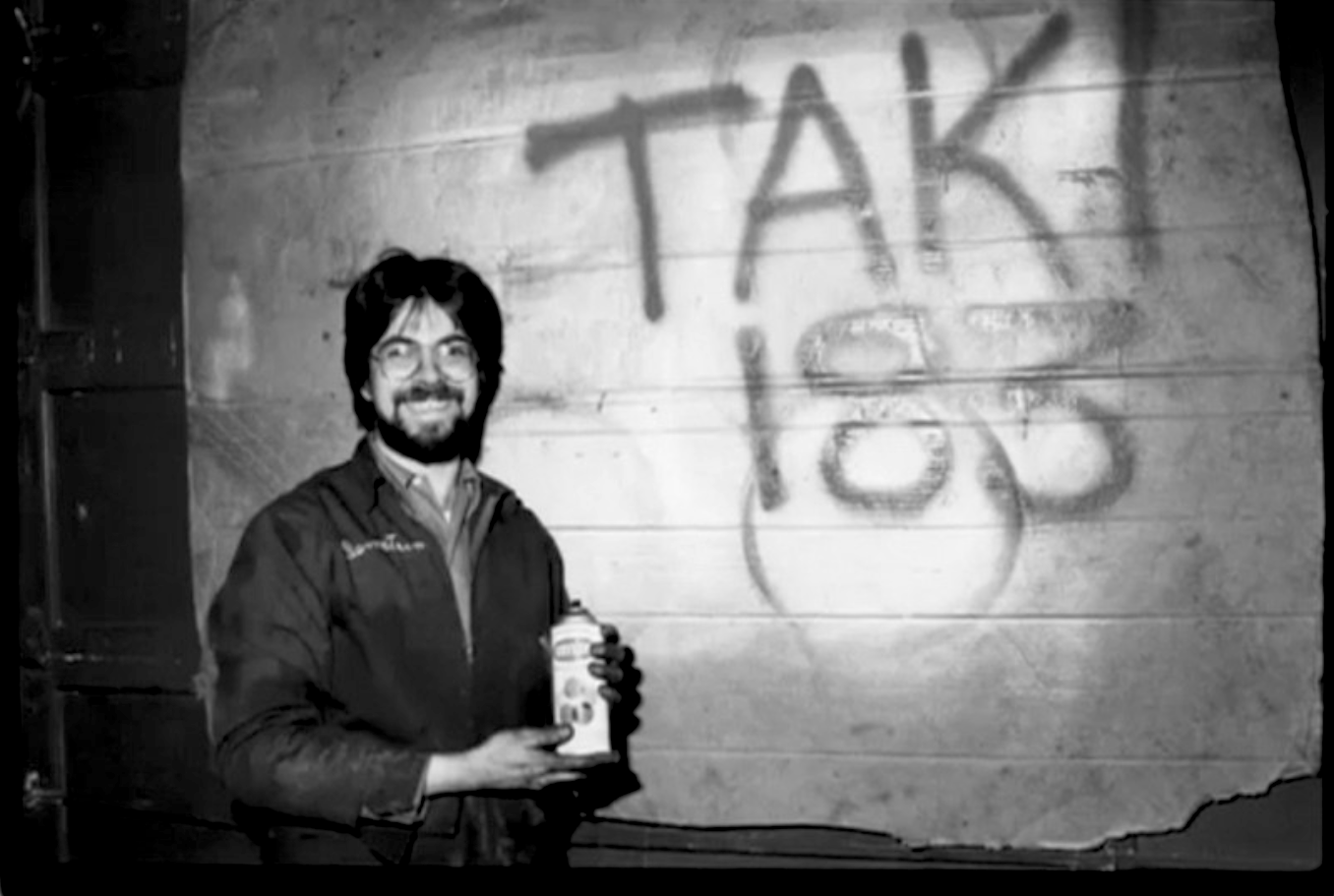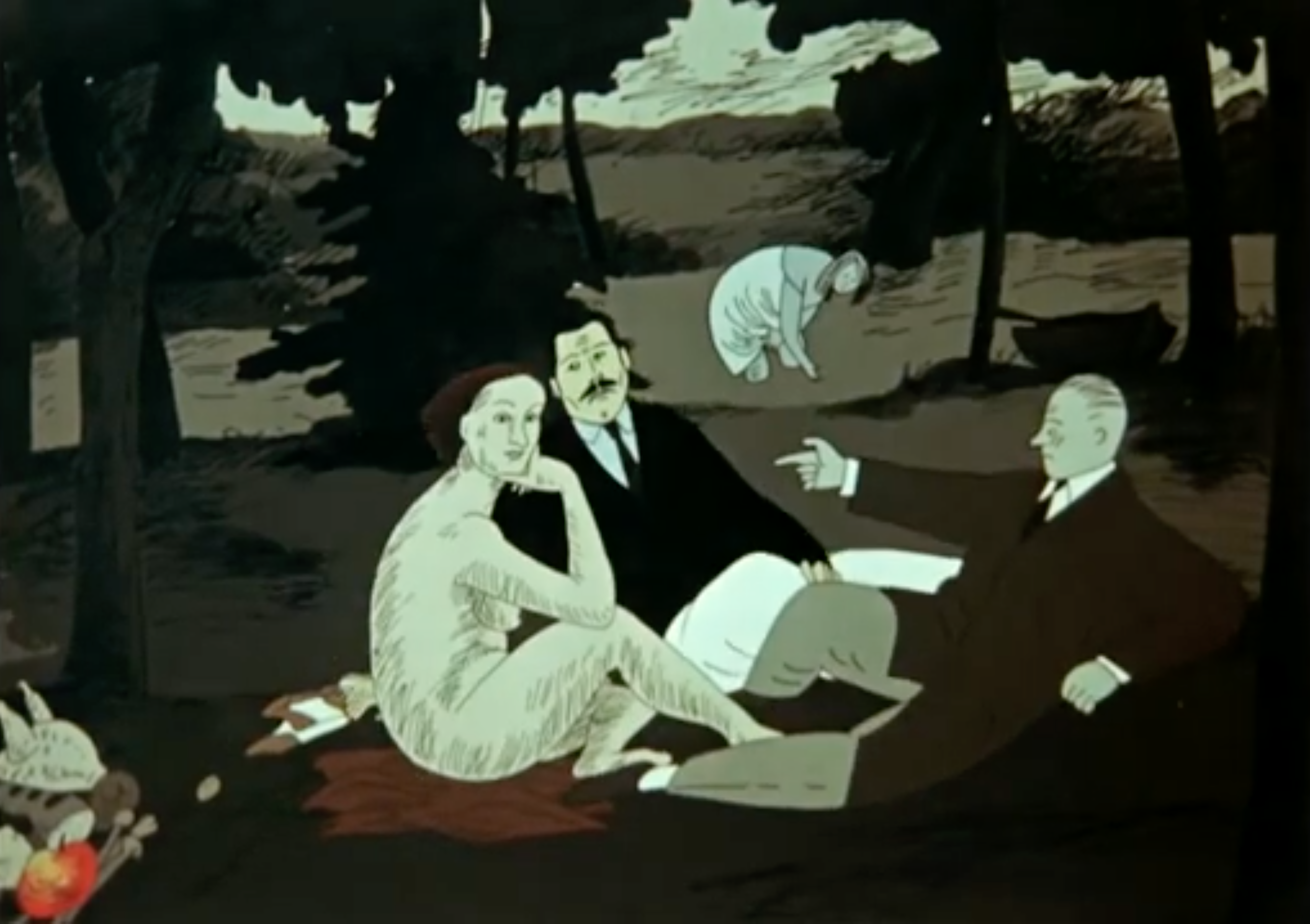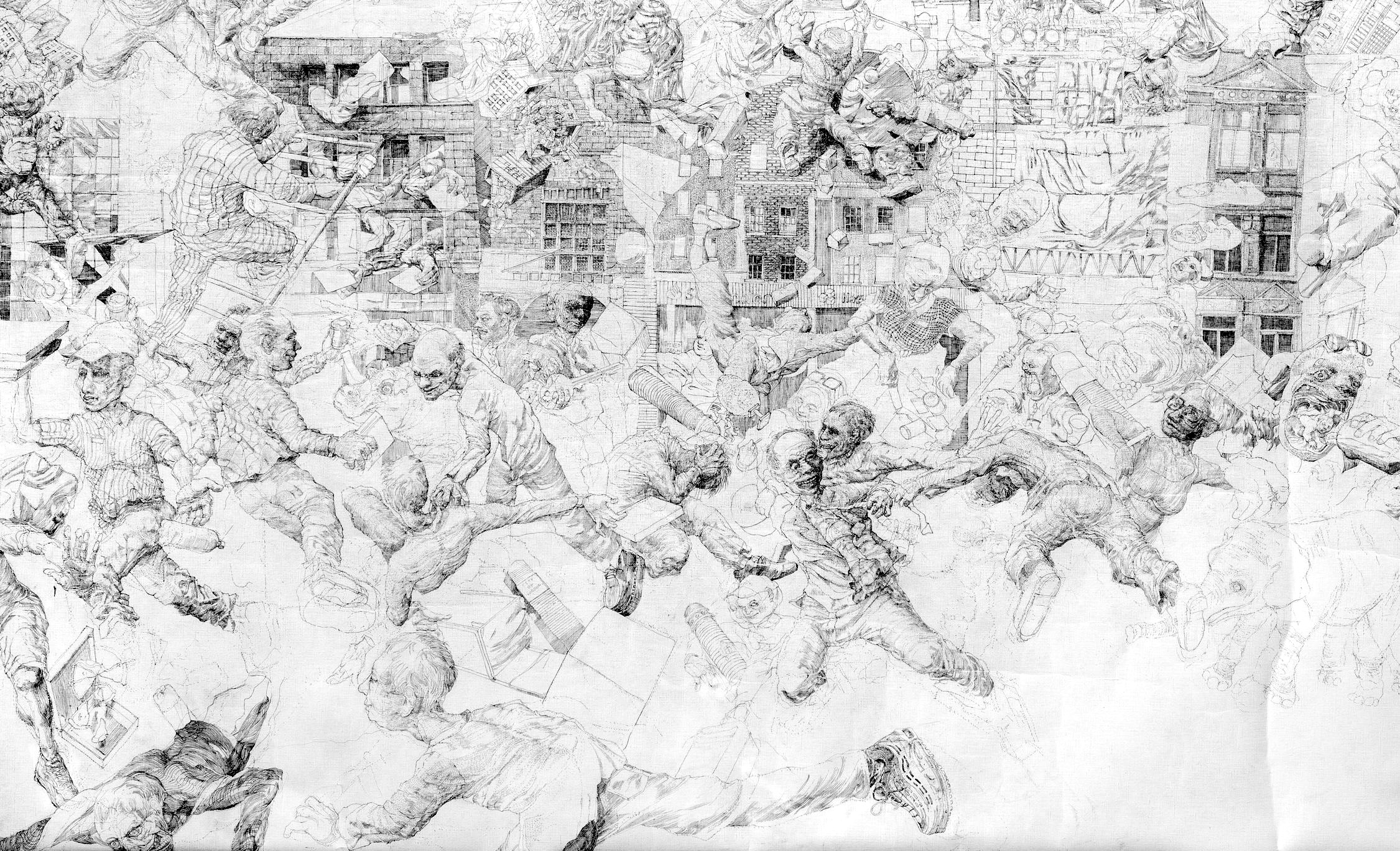Avant-garde surrealism and comic books come together in a little-known early graphic novel created by visionary artist Martin Vaughn-James.
Imagine a story with no characters except you, the viewer. A narrator drags you through a surreal post-apocalyptic wasteland of abandoned buildings, fifty years before “liminal spaces” became an Instagram hashtag. That’s the ride you get with a little-known Canadian avant-garde graphic novel from the ’70s, unlike anything else in your dusty bookshelf.

This isn’t your average comic. It’s part modernist prose poem, part giant experimental art panels, with a narrator piecing together memories one huge frame at a time. Welcome to a post-human Earth, where humans have bolted, leaving behind a decaying playground where the debris takes on a life of its own, like Toy Story gone dystopian.
The narration is as clinical as a surgeon’s scalpel, paired with clean, exact linework. No motion lines here; every scene is frozen, resembling diagrams more than action-packed frames. Each page features a single, large graphic panel with minimalist text off to the side, like a gallery of silent screams.

The landscapes are sprinkled with trash and abandoned objects in bizarre poses, relics of human life like a suit of clothes and stray photographs. You can see the decay creep from one panel to the next. One moment, a bedroom fills with sand à la the abandoned town of Kolmanskop; next, a palatial museum echoes the Louvre during WWII, with empty frames where masterpieces once hung.
Buildings crumble, objects shuffle around, plants spring up—a botanical takeover marking human absence. Perspectives and directions shift irrationally, leaving you as disoriented as after an Escher binge. But wait, it gets weirder.

Media artifacts—film reels, vinyl, books, cameras—are arranged on a bed in human shape, like Arcimboldo’s bizarre portraits. Later, these same objects neatly form an installation around the bed, another recurring symbol throughout the work.
At one point, the comic panels themselves crack, echoing the disintegration of buildings. Panel sizes shift, making you question reality. Billboards on the street show scenes from earlier in the narrative, blurring the line between what’s real and what’s just plain trippy.

Time’s a mess too. A pyramid starts in ruins and later appears pristine, the narrative leaping back and forth like a crazed time traveler, reminiscent of Richard McGuire’s “Here.”
In place of the onomatopoeia or speech bubbles typically found in comics, the relentless narrative text seldom matches the imagery, often describing what you can’t see—sounds, feelings—like an experimental silent movie gone rogue. Lines like “a frozen geometry of mutilated props a silent drama a wingless crippled and carnivorous repertoire of shrieks” read like a word collage more than a coherent description. It feels like an alien landed late and tried to make sense of our leftovers.


Martin Vaughn-James, the mastermind behind this mind-bender, envisioned it as a maze. His preliminary sketches hint at multiple paths to take through this world, much like Piranesi’s labyrinthine prisons.
Mostly an illustrator, Vaughn-James published only about six graphic works in his lifetime. Born in Bristol during a German air raid. According to one interview, his childhood playground was “abandoned airfields, weed-covered bomb-sites, enigmatic bits of shell-casings, helmets, rusting away in woods and fields.”

Eventually, he wandered over to Canada during the counter-culture zenith. “It was the “Trudeau years” — deserters, the Vietnam War, the FLQ (Front de Libération du Québec), Canadian identity, May 68, American assassinations, Watergate, Pop Art, Bacon, Dylan and Zappa, Borges, Bergman and Beckett, Godard and Pasolini. And I was immersed in it. The psychedelic made its presence felt in graphic art and the distant thunder of revolutions could be heard on the calm, green streets of Canada,” recalls the author.
Toronto, in particular, buzzed with avant-garde experimentation in poetry, comics, and visual art, thanks to the likes of bpNichol and Snore Comix. They found a home in Coach House, the same publisher that brought us “The Cage.”

Vaughn-James dubbed his work a “boovie”—a decidedly silly portmanteau he coined to describe his idea that book and movie could blend, and the result isn’t necessarily a comic. He describes it as thus: “not a book, not a comic-strip, not a de-animated cartoon, not a scenario for a film. It is a new form, which, granted, like any new form owes something to those already in existence.”
Later on, he probably realized that “boovie” didn’t catch on like he had hoped and just referred to his work as visual novels instead, in the process underscoring his noted inspiration by the French New Novelists, such as Alain Robbe-Grillet, who prioritized process over plot, making sense be damned.

His earlier works, like “Elephant” and “The Projector,” flirted with underground comix style that was big at the time—think Robert Crumb meets Hariton Pushwagner’s Soft City. According to a good analysis: “Both Pushwagner and Vaughn-James focus in on a very “sixties” feeling of unreality, the obvious though often unmentioned artifice of life in a newly post-nuclear, Fordist world where mass reproduction and mass consumption are the basis for both economy and culture … and Pop Art was a worldwide mass-cultural expression of the same thing.”


Martin Vaughn-James’ work is surrealism wrapped up in everyday banality. In “Elephant”, household objects discuss their dreams and a sense of meaninglessness. In “The Projector”, a horse with a rider wrapped up in burlap and rope like a Christo artwork breaks through the walls of a glass greenhouse and gallops across a landscape until falling off a skyscraper and landing onto the umbrella of three cartoon pigs, but not before shapeshifting into a suitcase on the way down. A photo of the horse rider falls out of the suitcase and the pigs cut it apart with scissors.
In a 1977 interview, Vaughn-James points out his influences weren’t any other comics, but early 20th century experimental art like “Max Ernst’s collage novels” and “woodcut narratives of the same period”, understood to be the work of printmakers like Lynn Ward, Giacomo Patri, Otto Nückel, and Frans Masereel who created woodcuts based around the concept of a “wordless novel” in which a story was told through a series of individual pictures, an obvious precursor to the graphic novels of today.

But what does anything in “The Cage” even represent? In the artist’s words, he “repeated images, re-ordered the chronology in an attempt to free the narrative to operate on many levels simultaneously.” So by the artist’s own admissions “The Cage” eschews narrative, in favor of establishing a particular atmosphere. On top of that it puts little of any importance on the progression of time, and places more weight on the journey itself instead of the destination, with a matter-of-fact presentation of the surreal nested within the banal a la Magritte. One critic described it as “nightmare realism” and I think that really says it all.
If the recurring bed object is the main subject of the narrative, a stand-in for a human protagonist—as one critic believes—then is the presence of this analog technology to record, receive, and recall information implying they are the senses and forms of expressions we have to be individuals? The decay and constant reminders of time’s passage highlight our fragile grasp on understanding each other.


Vaughn said he chose the name for his earlier work “The Projector” because he saw the eponymous device as “a metaphor, not only for ‘society’ but for the generative process of narration itself.” It can be assumed he chose the title for The Cage for the same reason, speaking to our struggle to communicate and preserve memories against the relentless tide of time. We’re all cages, trying to reach other cages, with our inventions destined to rust away.
The Cage’s language flows like a masterful prose poem, creating an architectural journey into emptiness where ruins become a spatial encounter. It’s decay tourism without the human carnage, presenting a story without characters and merely making one from describing the setting, akin to cyberpunk writer William Gibson’s “Thirteen Views of a Cardboard City” in which he describes the various belongings and makeshift living areas seen on a street, whose owners the reader never actually encounters.

It’s no doubt a literary product, worthy of comparison to T.S. Eliot’s modernist epic “The Waste Land” with its abrupt shifts of location, time, and narration, or J.G. Ballard’s The Burning World, which similarly tells the story of a dried-out and desolate surrealistic landscape that changes according to the psychological stress and other developments undergone by the protagonist.
No more large-scale graphic novels followed, only two relatively minor graphic works L’Enquêteur (2002) and Chambres Noires (2007) many decades later. Seemingly having said what he wanted to say, Martin Vaughn-James switched gears to formal art and detective novel writing, churning out Night Train (1989) and The Tomb of Zwaab (1991), still keeping up his distinctively surrealist across different mediums.

His paintings, too, echo similar themes—menacing household objects, forsaken ancient ruins, and feelings of forlorn alienation in general. Since 1975, he immersed himself in his art, holding numerous exhibitions, mainly in Brussels and Paris. In 1999, he formed the artists’ group Mémoires. Published when comic books were still flimsy, disposable 30-page pamphlets, Vaughn-James’ nearly 200-page masterwork blazed the trail for the graphic novel, arriving a good decade ahead of its time.


Critic Domingos Isabelinho said it best: “The Cage is a book about our desire to communicate, our struggle to perpetuate our memory, our ideas, and our feelings against something far bigger than ourselves: Time.” This comic is a stark reminder that we can traverse narrative, visually and textually, without needing a hero to follow.
So, seriously, just read it. The UbuWeb avant-garde media archive has a scan (alongside many short-form works of his worth checking out), and Coach House re-released it a few years ago if you really want a nice physical copy. Dive into the chaos.






